Like many ocean diving fanatics, I often forget about the potential wonders of fresh water diving. I guess I’m just so critter focused, all I want to do is discover what the world’s oceans have to offer.
But you know what? Diving the Blue Grotto helped me change my mind.
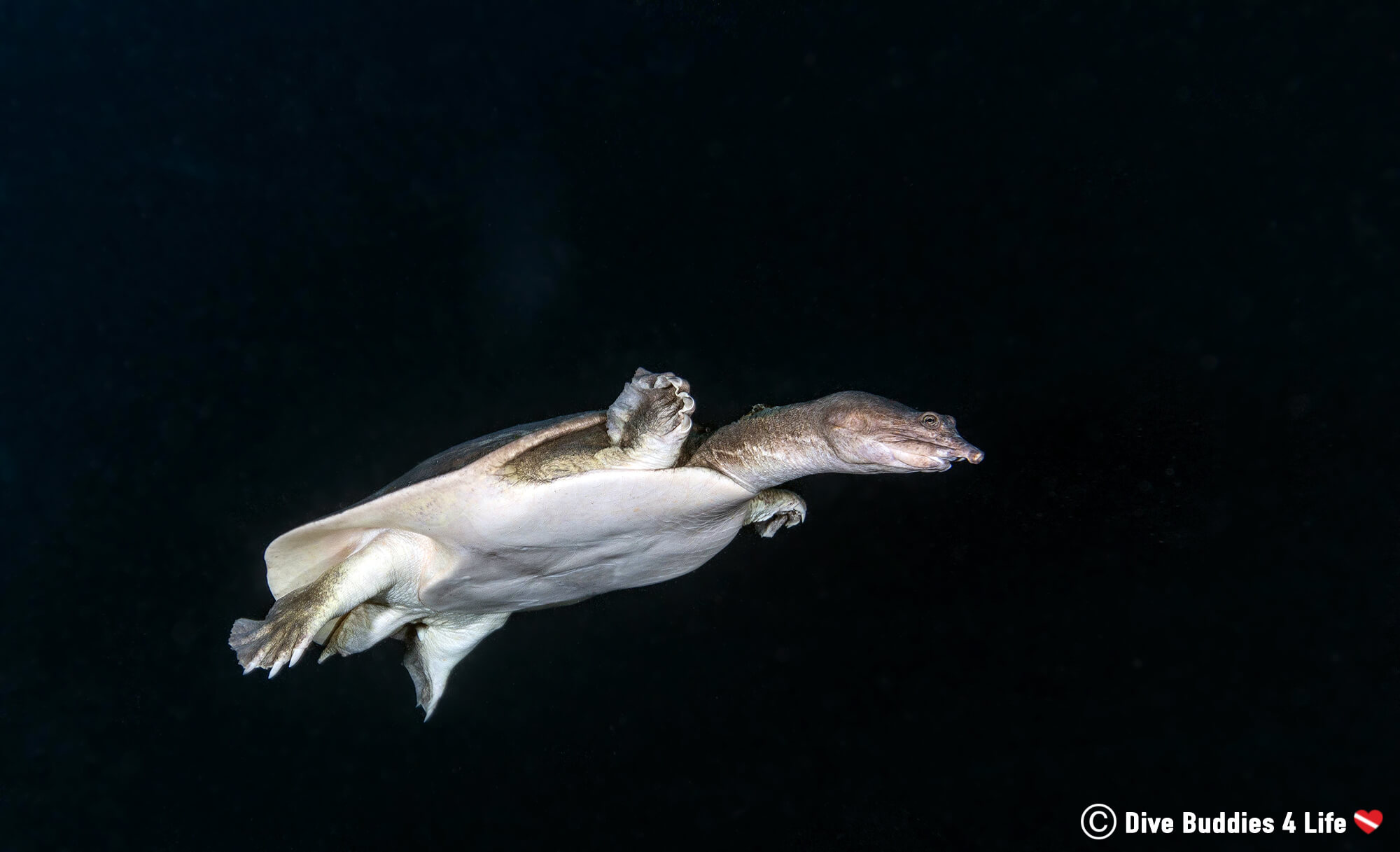
There’s a small town on the on the upper west side of Florida, just south of the panhandle, that is considered the gateway to “the Nature Coast.” Williston may be hard to point out on a map, but this heartland is filled with vast wilderness, alligator-infested swamplands, and rugged southern charm.
The town of Williston has a population of about 2,800 and being such a small community, for the average traveler, there isn’t an extraordinary amount of things to see and do in this place.
Good thing we aren’t your average tourists…

While Florida may be famous for its beachy coast, there are magical sights for those willing to take a break for the sea and head inland instead. This southern state boasts over 900 freshwater springs.
In the area that underlies Williston, the limestone formations combined with spring water have created many interesting geological features. Caves and caverns flooded with impeccably clear water are substantial in this part of Florida, and because of this, divers from all over the country travel here for recreational and technical dives.

Of the many landlocked dive sites in the region the Blue Grotto and the Devil’s Den are two of the most popular sites, not counting the world renown Ginnie Springs which is about an hour drive north.
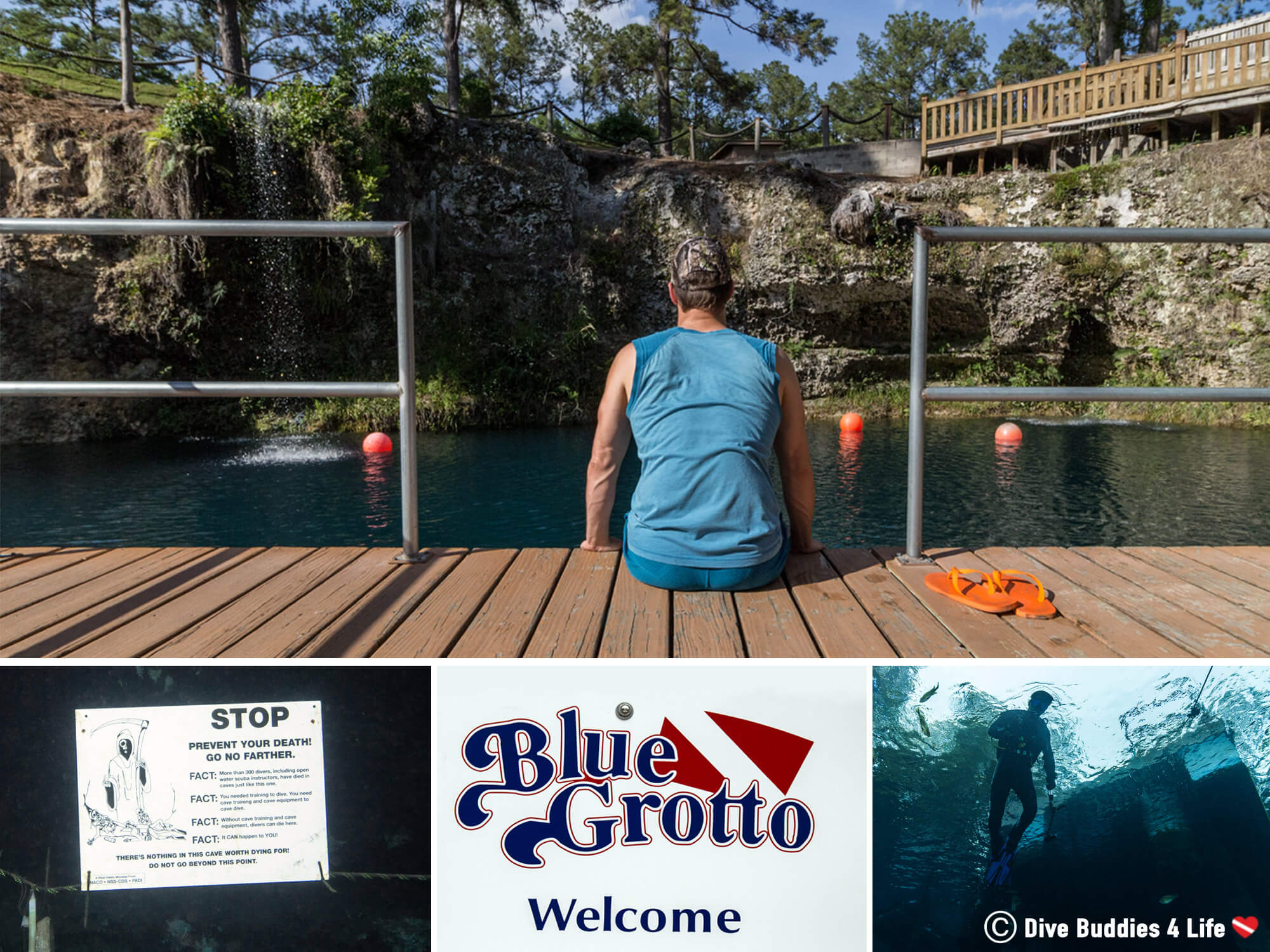
The Blue Grotto is the largest of many clear spring water caverns in the Williston region. The site is privately owned and houses its own scuba shop, swimming pool, picnic shelter, cabins, and camping facility.
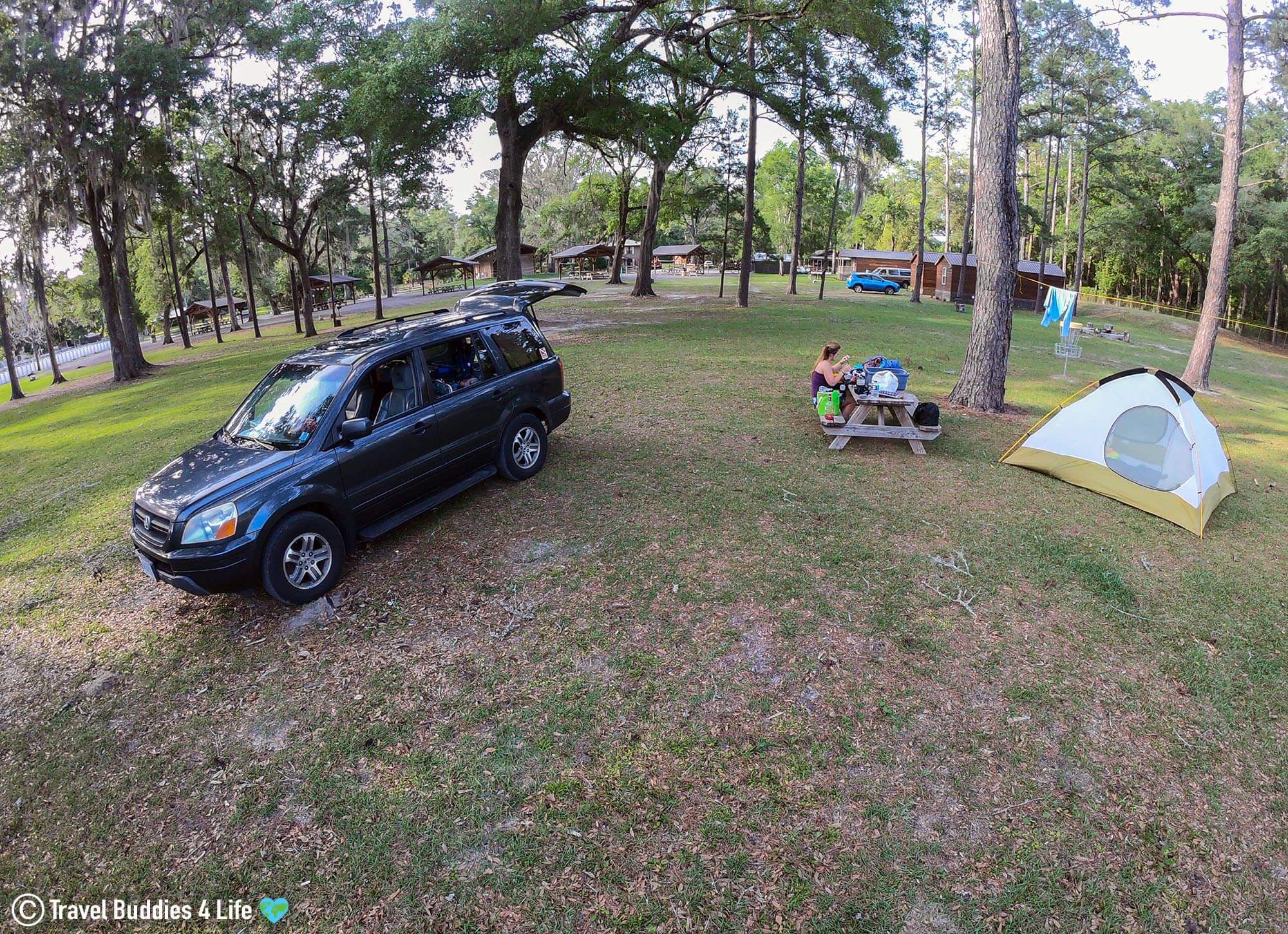
This dive site itself is split into two areas; the Cavern and the Cave.
The Cavern (seen in the picture below) is the most popular of the two. Here open water divers can enter the mouth of this massive sinkhole explore down to a depth of 30 meters (100 feet) in 23°C crystal clear water. There are platforms, a diving bell at 9 meters (30 feet), and a small swim through at the very bottom.
The Cave (not displayed in the image below but that has an opening just behind the 10ft entrance platform) is one of the newer sections of the dive site. It runs horizontally in the opposite direction (downstream) from the cavern part. The cave consists of a large room roughly the size of a football field. With fragile rock formations and virtually every surface covered by a thick, undisturbed layer of silt, to dive this part of the Blue Grotto, scuba divers must be cave certified for obvious safety reasons.
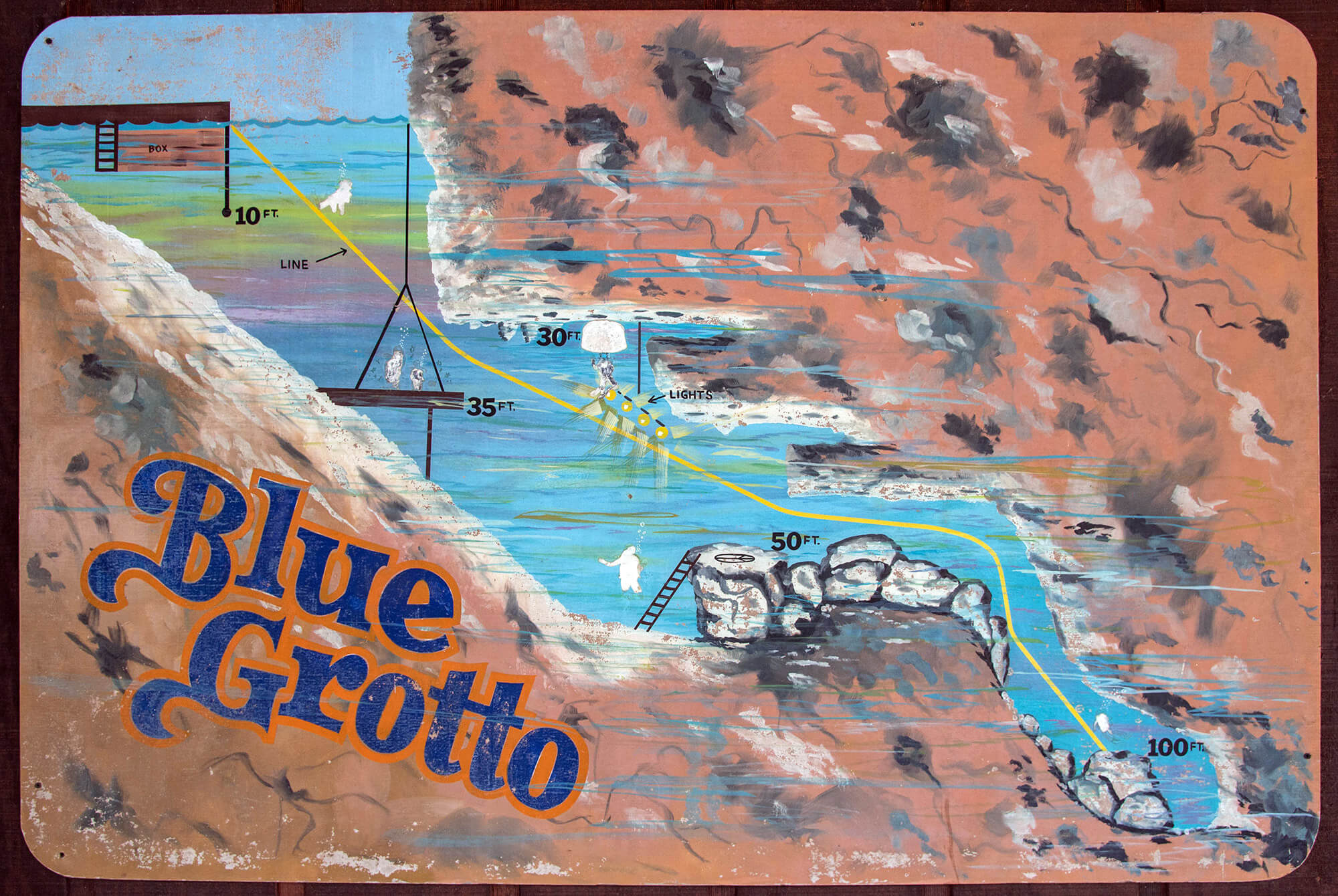
I’ll never forget the moment of impact; the first shock as I hit the water of the Blue Grotto, and the second – more jolting one – as the cold water seeped past my 3mm neoprene wetsuit layer.
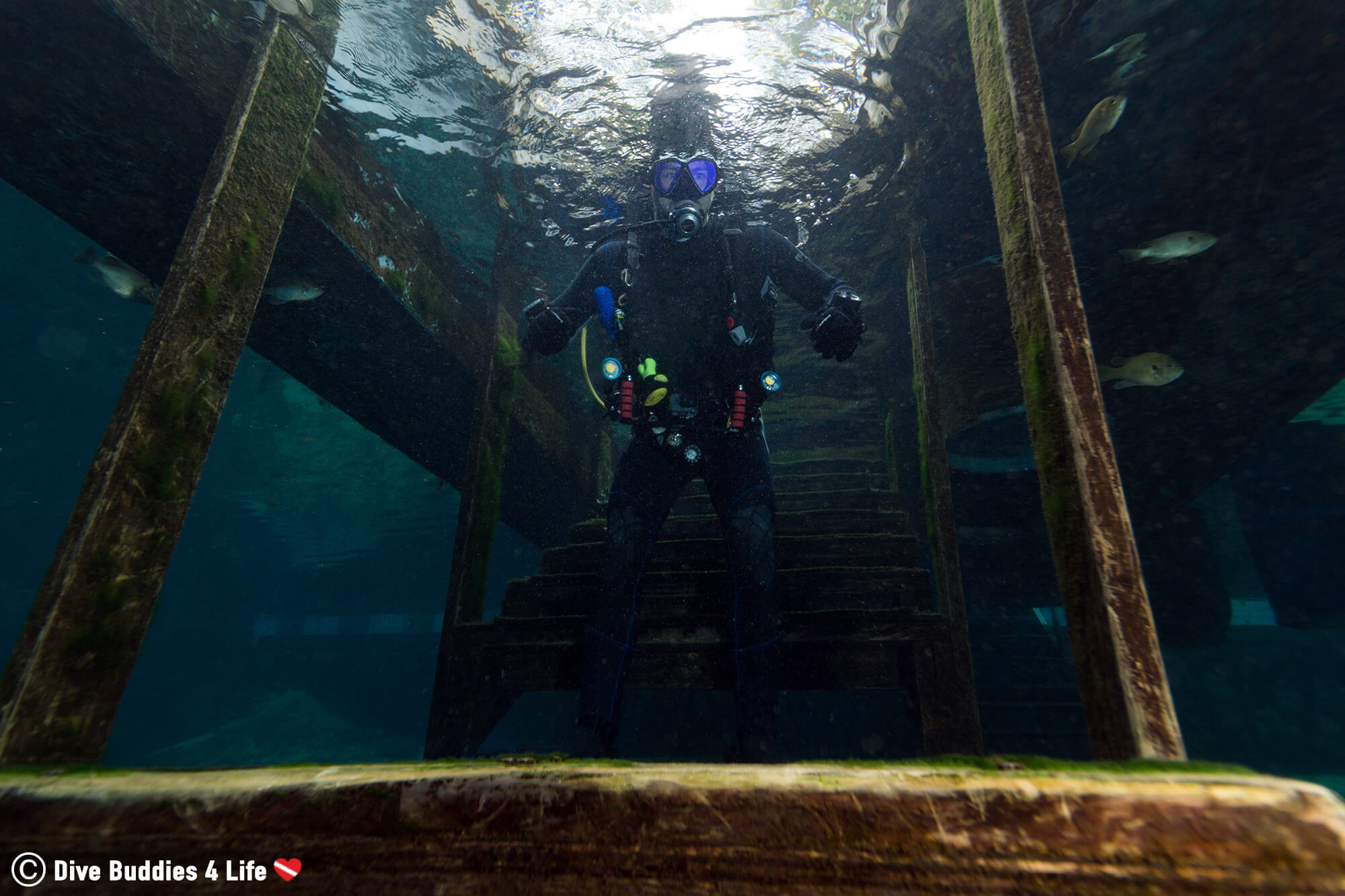
After weeks of ocean diving in Key Largo and at Blue Heron Bridge, I just didn’t expect Florida water to feel this cold. I guess I forgot that this dive site is spring fed, and when it comes to underground spring water, well let’s just say it can be a tad chilly.
At 8:05 AM, mere minutes past park opening time, Joey and I were in the water and ready to take on the Blue Grotto.
Why did we get up so early you might wonder? After talking to the park owner, it was highly recommended for the best experience and visibility, to be the first ones in the sinkhole. The Blue Grotto is a hot commodity place and, especially on very nice days, the water can get crowded with divers.
As Joey and I descended into a ripple of bubbles, small freshwater fish surrounded us in an inquisitive way, almost as if they wanted to know who had so rudely jumped into their home. Looking back on it now I think they were on the prowl for free food handouts.
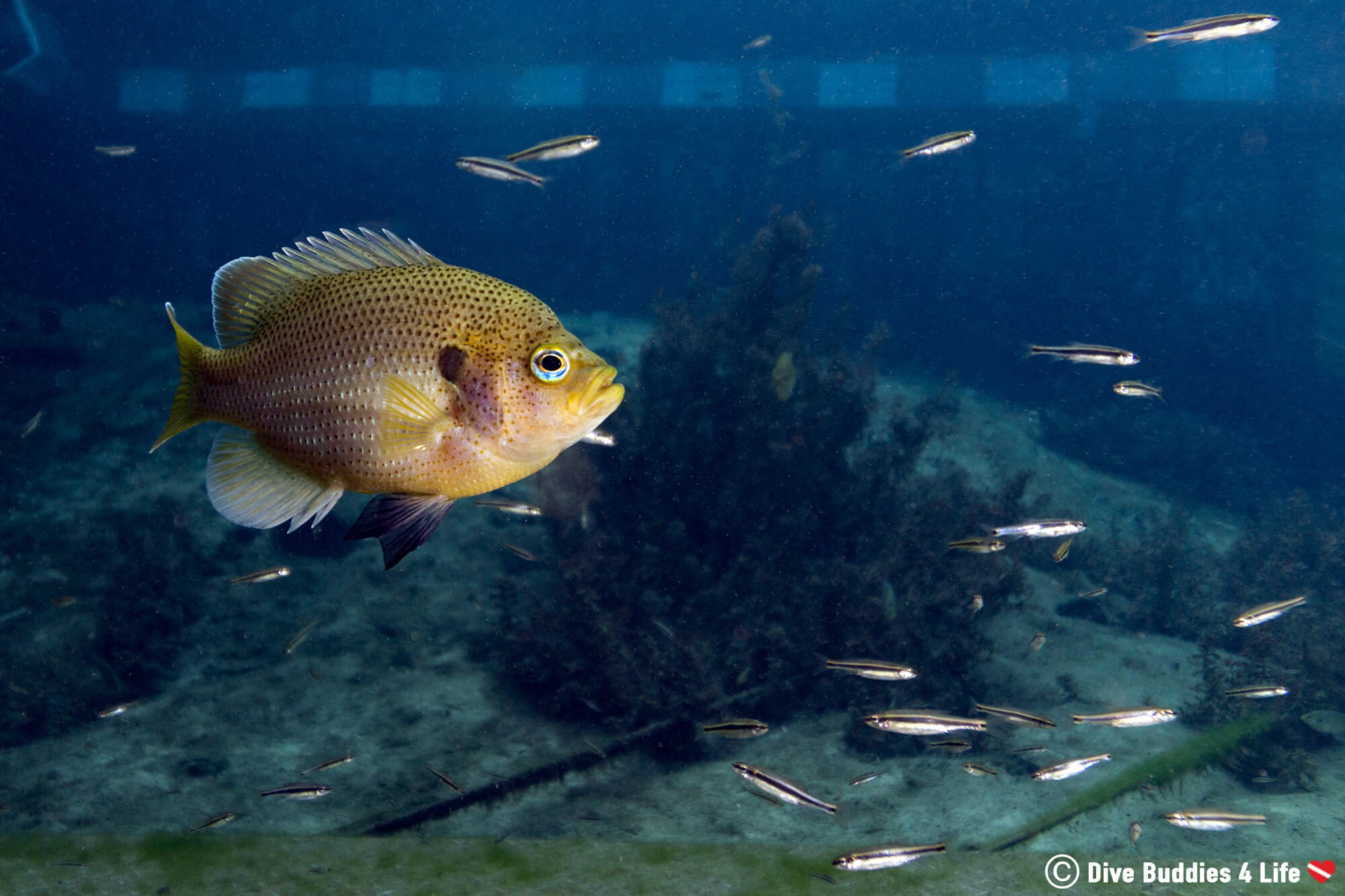
At a depth of 9 meters (30 feet) we passed into the overhead environment. I caught a glimpse of the diving bell – an air pocket filled with fresh compressed air allowing divers the unique opportunity to stop and talk to their dive buddy while under water.
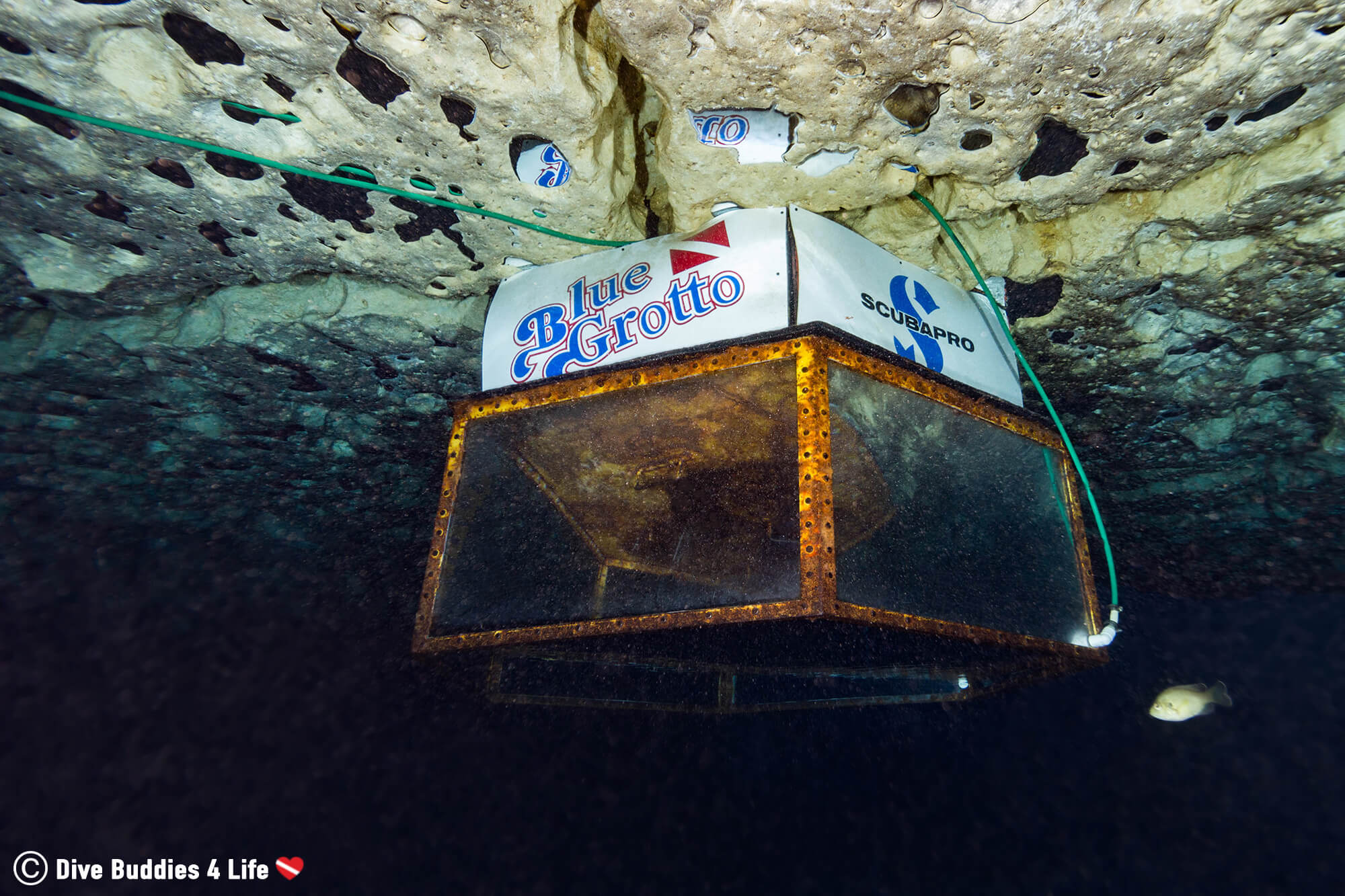
From 15 meters (50 feet) a permanent guideline was fastened helping divers descend to the deep crescent-shaped cavern. The depth here manifested itself in dark blue hues, making me feel like I was looking at a world through the blue side of 3D glasses.
Slowly but surely we dipped down to the bottom of the Blue Grotto, carefully passing into the cave-like swim through.
There’s no feeling like it – being in complete and utter silence, surrounded by water and rocks. And it was deep. Too deep to spend excessive amounts of bottom time, but not technical diver deep. For the next few minutes, I tweaked my buoyancy trying to exert myself as little as possible in a place where every small movement counts.
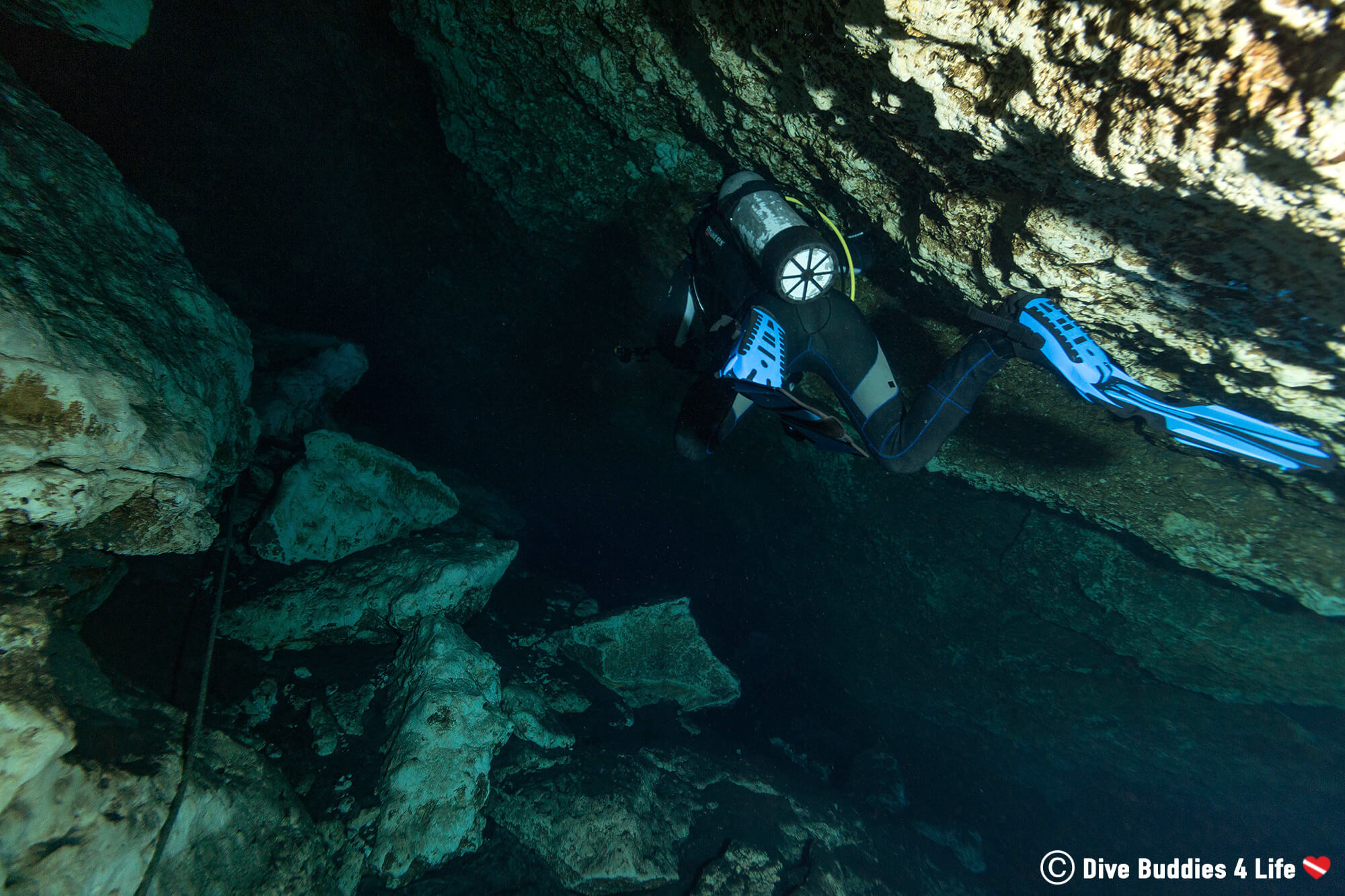
Once we’d had enough of the enclosed cavern darkness Joey and I slowly headed toward the sunlight.
The closer to the surface we swam the more vegetation seemed to grow. Joey bobbed around me as I took the time to inspect some prime fish hiding spots looking for any form of aquatic life.

All too soon it was time to go back to the docks. But not before we had a very personalized encounter with Virgil that Blue Grotto’s resident softshell turtle.
Ask anyone who knows me, and they will tell you I’m a big sucker for turtles. I can’t help it; I simply love them more than the Backstreet Boys. Almost as soon as Virgil came paddling out from the mucky bottom, I squealed in my regulator.
Interesting Fact: Softshell turtles have a light and flexible shell that allows them to move easily in open water and in muddy lake bottoms. Their shell also allows them to move much faster on land than most other turtles.
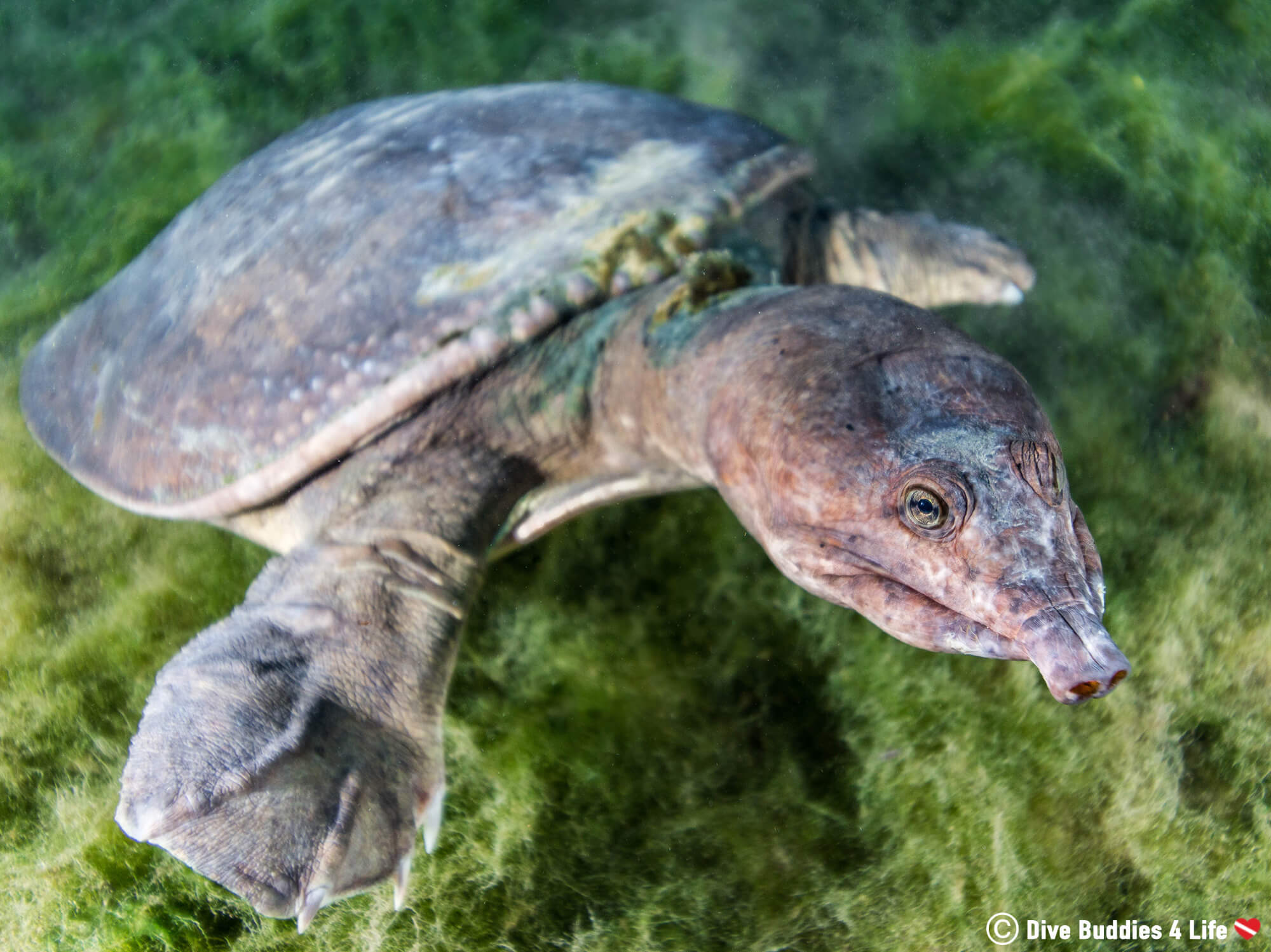
WOW, Blue Grotto, just WOW!
From the shoreline; from the water; heck, even from high up in the air; this sinkhole sure is something magnificent.
Diving the Blue Grotto was the first time in a long time where Joey and I had the chance submerge in a freshwater body of water – and we LOVED it! The lack of current, the new animals to familiarize ourselves with and let’s not forget the extra weight that you can shed because of freshwater insted of saltwater diving appealed to us very much.
Given our early start at the Blue Grotto, Joey and I can’t vouch for the diving situation throughout the day, but by camping overnight and being the first ones in the water the following day, we had some of the best water conditions, and animal encounters one could hope for. It seems we played our cards right and it sure paid off.
As a diver heading to the Williston, Florida region – all we can say is make sure to put some time aside and visit the Blue Grotto sinkhole!
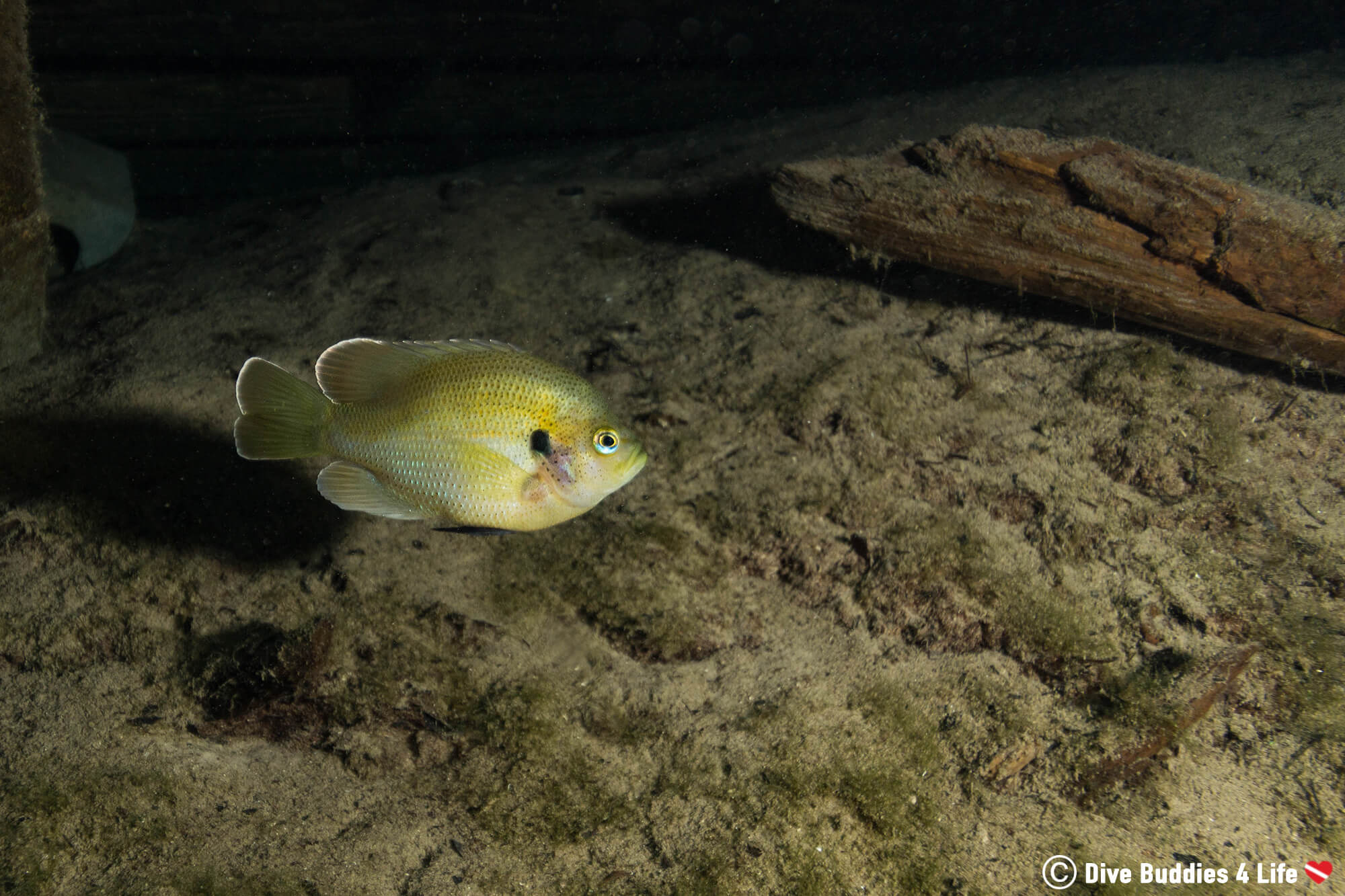
Have you ever visited the beautiful watery cavern of the Blue Grotto? What was your experience like? Would you go again?
Writers Note: This post may contain affiliate links. We will make a small commission if you make a purchase through one of these links, at no extra cost to you. See full disclosure and disclaimer policy here.

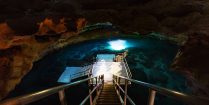
Dark, ancient and mysterious are a few words that can be used to describe the Devil's Den cavern in Florida. Find out what it was like to visit this world-class tourist destination and dive this prehistoric spring system.
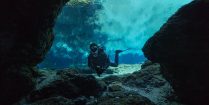
The crystal clear water of Ginnie and Devil’s spring systems is arguably some of the best freshwater diving in all of Florida. As a scuba diver heading to the sunshine state, make sure to put this spot on your travel itinerary!

As one of the sunshine states top shore diving destinations, Blue Heron Bridge offers some of the best diving in Florida. Mud, beaches, wrecks and small critters, no matter where you dive under the bridge, there is so much to see, explore and photograph.
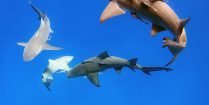
Sitting pretty right next to the gulf stream, Jupiter is known as one of Florida's best shark diving location. Drift along in the current as you enjoy an up-close encounter with the ocean's apex predators.
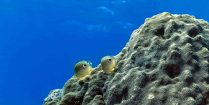
The tropical oasis of Key Largo is a scuba diver's delight. Night dive, reef dives, and wreck dives are all right at your fingertips ready to be explored.
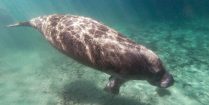
Offering topside beauty and underwater magic, escape to Florida's freshwater springs and snorkel with one of the most majestic marine mammals on the planet.
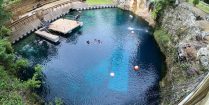
Florida may be known for its ocean coast, but this southern state is also home to some of the best spring and cave systems in the country.
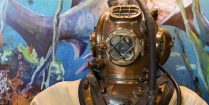
When in the Florida Keys, make sure to take the time to learn all about man’s quest to explore under the sea at the History of Diving Museum.
